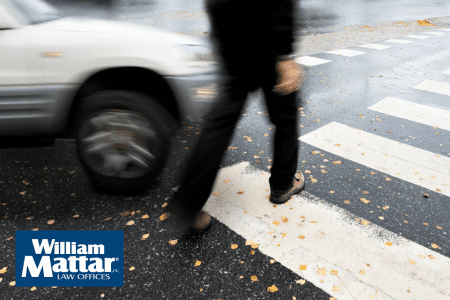

(844) - 444-4444

Walking is a popular activity. Some people walk for exercise. Some walk for recreation and relaxation. And many city dwellers walk just to get around. As habits go, walking is one of the healthier.
And yet, statistically speaking, anyone who crosses a street or road while out for a leisurely stroll may be at risk of injury or death. Every year in the United States, 6,000 pedestrians and 850 bicyclists are killed and another 76,000 pedestrians and 47,000 bicyclists are injured, according to the Federal Highway Administration.
Walking and cycling safety depends on effective local road safety plans, which should account for the “4E’s” of engineering, enforcement, education, and emergency services, according to the Federal Highway Administration.
The National Highway Transportation Safety Administration, in a helpful factsheet, defines a pedestrian as “anyone walking, running, jogging, hiking, sitting, or lying down.” Just like motorists, pedestrians are expected to exercise reasonable care and follow the Vehicle and Traffic Law while navigating New York roadways and parking areas. Pedestrians who are injured in a car crash can be found negligent if their actions contribute to an accident. This can give rise to a finding of comparative fault, which can reduce the amount of any personal injury recovery.
For example:
Distracted by a cell phone, someone unexpectedly steps into the road, violating New York law. If struck by an oncoming car, the pedestrian may have comparative fault, which – assuming the driver too is negligent, perhaps by speeding or failing to pay attention – could lessen any compensation the pedestrian receives for pain and suffering.
A pedestrian also may be negligent if involved in an accident while
Articles 26 and 27 of the Vehicle and Traffic Law explain who has the right of way depending on the circumstances. Article 27 defines pedestrians’ “rights and duties,” explaining rules of the road relating to right of way in crosswalks and on sidewalks.
New York’s comparative-fault rule apportions fault in proportion with the degree of negligence, so even a pedestrian who’s partly to blame for an accident may receive some compensation. A driver who fails to avoid an accident because of inattention, distraction, or speeding may share fault with the pedestrian and be liable for damages.
If you have more questions about pedestrian negligence or comparative fault, please do not hesitate to contact an experienced pedestrian-accident attorney at William Mattar, P.C. Call 844-444-4444.





